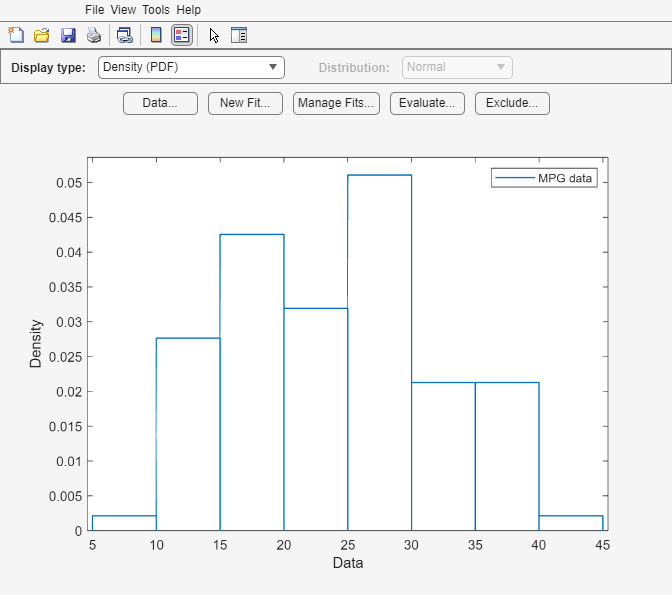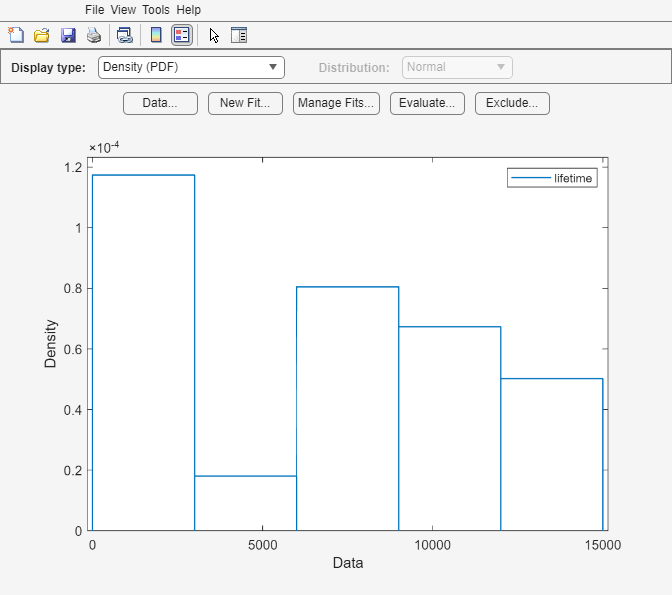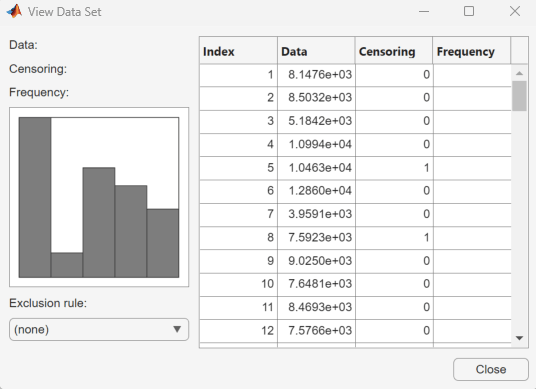distributionFitter
Open Distribution Fitter app
Syntax
Description
This page contains programmatic syntax information for the Distribution Fitter app. For general usage information, see Distribution Fitter.
distributionFitter opens the Distribution
Fitter app, or brings focus to the app if it is already open.
distributionFitter( opens
the Distribution Fitter app populated with the data specified by the
vector y)y.



